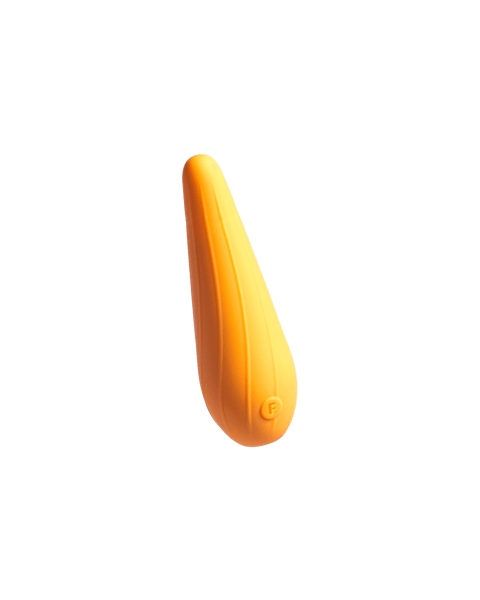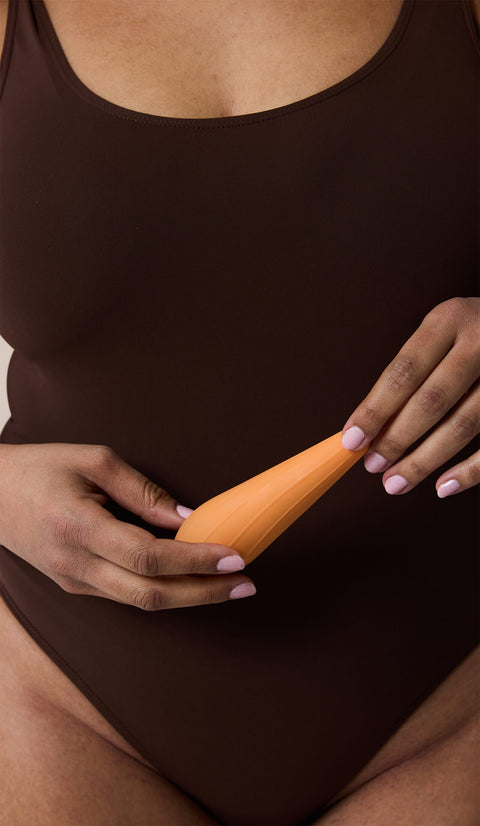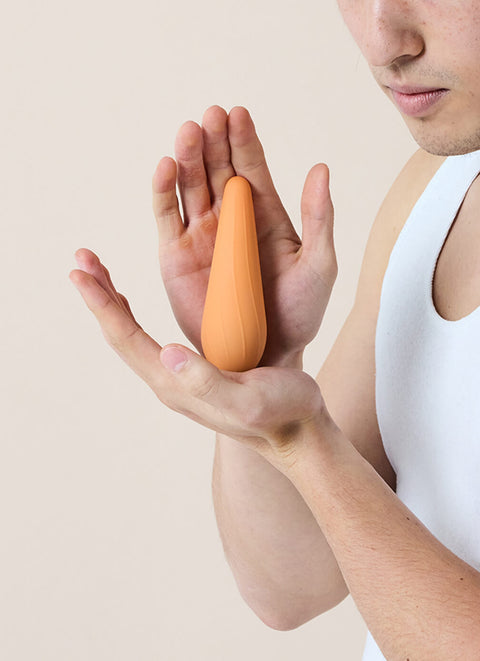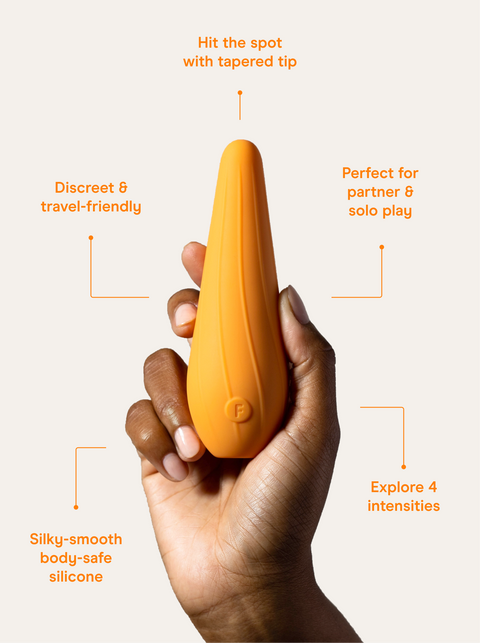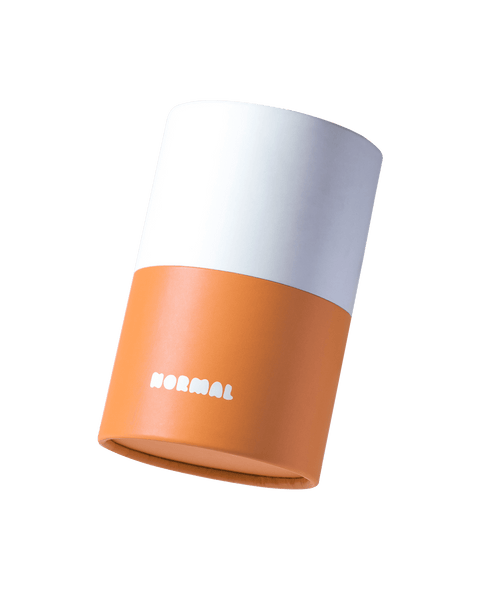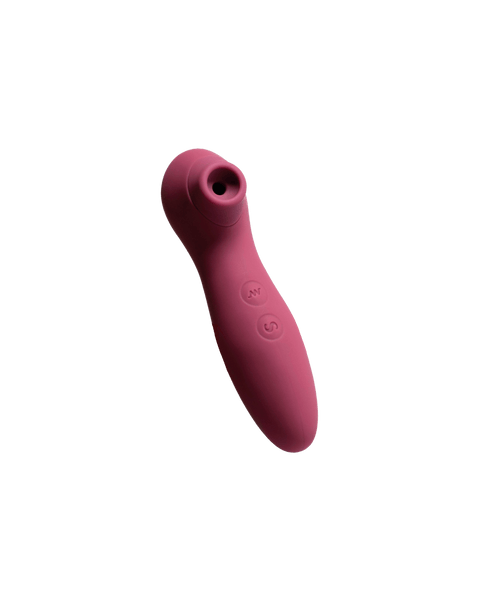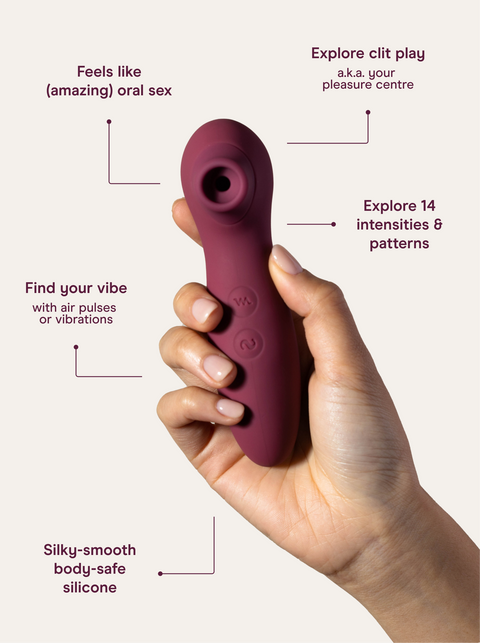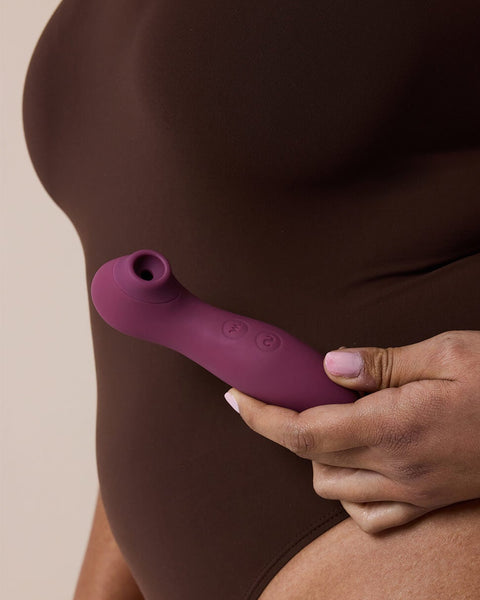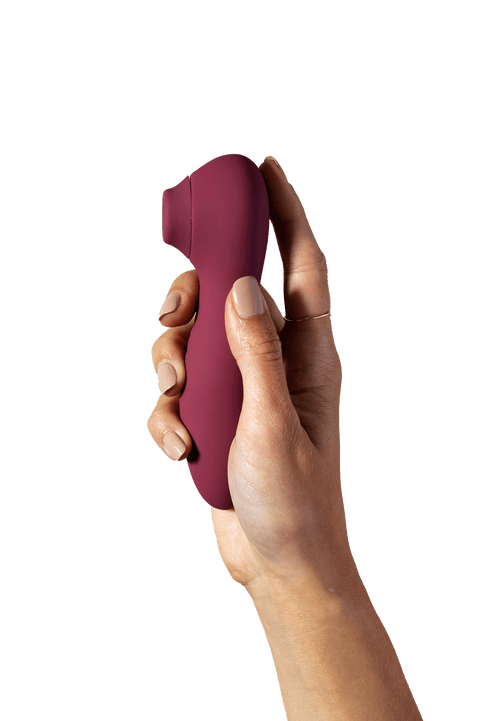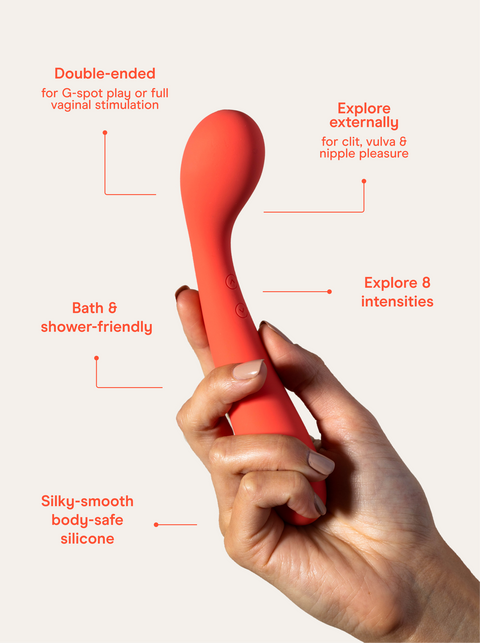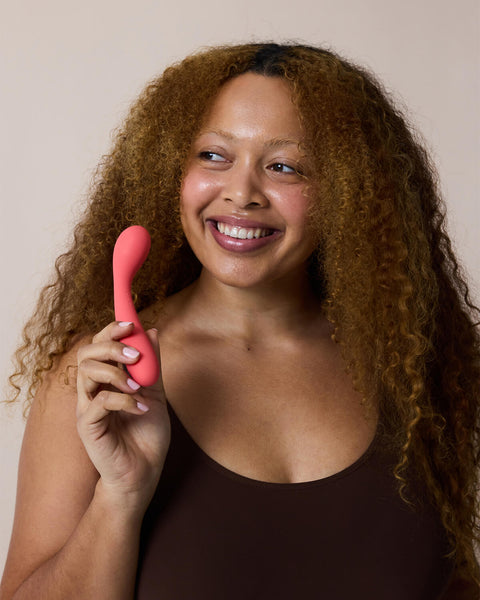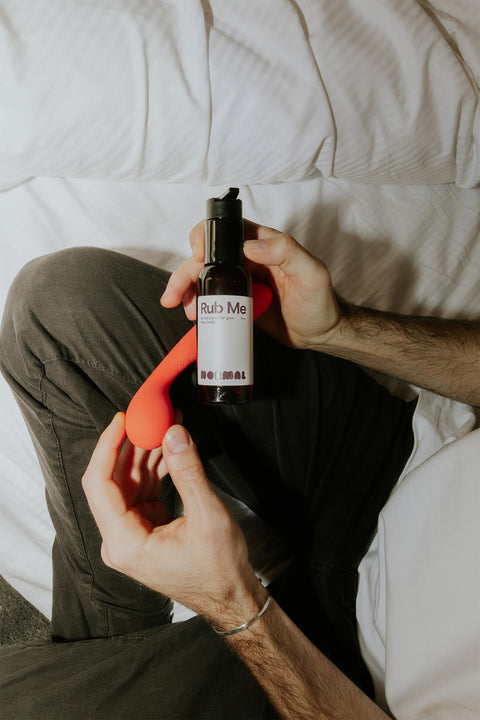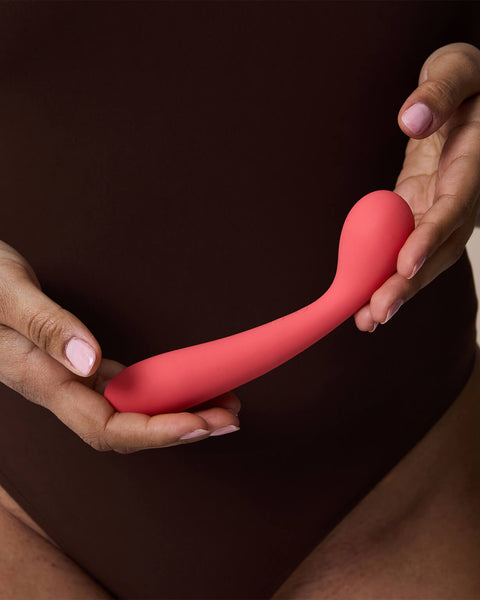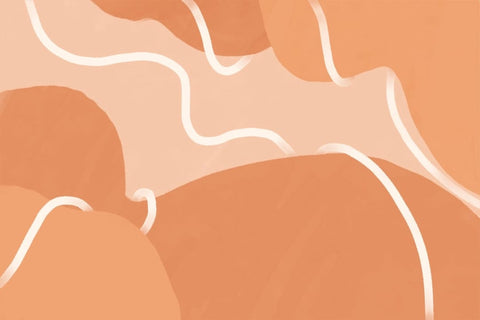For as much time as we spend talking and thinking about orgasms, they’re still a pretty mysterious topic.
After all, there are no precise instructions for how to have one (although we’ve given you some tips here) and we’re aware that they can happen really differently for everyone—some people find it easy to orgasm, some find it more difficult, and some people even orgasm in their sleep!
What we do know is that the orgasm has been studied extensively throughout history, with often mixed results.
Prior to the 20th century, the orgasm was seen as having a primarily reproductive function.
In medieval times, it was thought that the vulva and vagina were simply inverted versions of the penis , and it was assumed that women could ejaculate in the same way that men could—in fact, it was believed that she had to orgasm, and ejaculate, in order for a baby to be conceived5.
While that theory was debunked around the 17th century, orgasms continued to be a topic of research right up until the present day.
Sigmund Freud theorised that orgasms from clitoral stimulation were an adolescent phenomenon, and that adult women should be having vaginal orgasms from penetration instead1.
This theory didn’t make much allowance for the many ways women could experience pleasure, assuming an orgasm should eventuate from penetration alone.
Alfred Kinsey was a vocal critic of this theory in his now-famous Kinsey Reports. He said that most women focused solely on the clitoris during masturbation, and suggested that the vagina didn’t contain enough nerve endings to cause an orgasm.
In fact, he inferred vaginal orgasms were practically impossible, and went on to criticise theorists like Freud for “projecting male constructs of sexuality on to women”1.
This research was later supported by researchers William H. Masters and Virginia E. Johnson (immortalised in the TV drama Masters of Sex), who developed the first model of the human sexual response.
They believed our response to sexual pleasure begins with excitement, progresses to a plateau of continued arousal, often but not always involves an orgasm, and then comes to a resolution which is when our refractory period begins and we can’t orgasm again for a little while2.
While many other researchers and theorists have tried to explain and explore the orgasm over the years, these are some of the most famous ones—and their work still influences how orgasms are viewed now.
But what many researchers haven’t done is explore all the ways we can orgasm, from the well-known to the less obvious.
The Penis
A penile orgasm results from stimulation of the penis. Some of the more well-known ways this can occur are from penetrative sex (either anal or vaginal), blow jobs or oral sex, and hand stimulation or hand jobs.
But it can also occur when the penis is rubbed against something or someone (known as frottage, or dry humping) and it can even happen without the penis being touched at all.
Sometimes, thinking sexy thoughts, or having a sexual dream, is enough to cause a penile orgasm!
It’s possible to have multiple penile orgasms throughout a day, although the refractory period—the period in which the body has to recover from an orgasm—often prevents penile orgasms from happening one after the other.
Penile orgasms often, but not always, produce ejaculate (semen, or cum) and there are several things that influence how much ejaculate is produced: your age, your physical health, the amount of water you’ve drunk, and whether or not you’ve already had an orgasm that day can all reduce (or increase) the amount of semen the body produces.
The clitoris
Stimulating the clitoris can result in a clitoral orgasm. While most of us know the clitoris as the little nub above the inner labia (here’s a diagram for you if you’re already a bit lost), recent research has shown that the clitoris actually has nerves that extend down towards the vagina.
This means that stimulating this area on the outside of the body, by rubbing or stroking the skin of the vulva around the vagina, may also contribute to a clitoral orgasm.
The clitoris is the only organ of the body designed solely for pleasure—it has no practical or reproductive function, it only exists to make us feel good. Neat, right?
The clitoris can be stimulated during sex, oral sex, and fingering, and it can be rubbed, kissed, vibrated, tapped, and touched in many different ways to bring on an orgasm.
A clitoral orgasm doesn’t officially have a refractory period like the penis does, but different people will have different feelings about whether they can have one clitoral orgasm after another, or whether or not they need to wait a while before they can come again.
The vagina
Freud might have been a firm believer in the vaginal orgasm—an orgasm that occurs solely through penetration of the vagina—but modern-day researchers might have a bone to pick with him.
It’s been suggested recently that the vaginal orgasm doesn’t actually exist, and that clitoral orgasms are the only way a woman (or anyone with a vulva) can experience climax.
Anecdotally we do know a few people who have experienced vaginal orgasms, although studies have shown that about 70—80% of people need clitoral stimulation of some kind to be able to have an orgasm3.
Unfortunately, there’s no simple way to get an answer to the question of whether or not vaginal orgasms are possible.
This has been a question researchers have been arguing over for decades, with some people swearing vaginal orgasms are real and others saying they simply aren’t possible.
Our opinion on this (and on most other issues regarding sexuality!) is that if it feels good and right for you, then that is all the evidence you need!
“Vaginal orgasms are only a mystery because many people expect penetrative sex to lead to mind blowing orgasms, and for many this is not the case,” says Georgia Grace, sex coach and author. “That’s not to say that vaginal penetration can’t be pleasurable—it can be orgasmic without leading to orgasm.
Many love penetrative sex for the feeling of being ‘full’, being connected with a partner, warmth of another's body, and stimulating erogenous zones, just to name a few reasons.
“All of this can feel great, but sometimes it’s not enough and direct stimulation of the clitoris is necessary, which is the essential organ for orgasm.”
If you’re someone who’s able to climax solely from vaginal penetration, that’s great —but if you’re someone who needs clitoral stimulation as well, you are definitely not alone.
And if you’re someone who’s not certain how to access or stimulate the internal erogenous zones that can help you experience a vaginal orgasm, see below.
The g spot
The g-spot was named after the gynecologist who first discovered it: Ernst Gräfenberg. He wrote about it in the 1950’s and described it as a ‘dime sized spot’.
A sensitive, spongy area located a few inches up the vaginal wall, the g-spot is said to be responsible for powerful orgasms, incredible pleasure, and even ejaculation.
The only issue? “The g-spot isn’t actually a spot,” says Georgia.
“The hole that you pee from is your urethral opening which extends into your urethra, a tube that goes up to your bladder. The urethra is wrapped in erectile tissue, just like it is with penises."
"This tube of spongy erectile tissue is mistakenly called the g-spot. This erectile tissue can take up to twenty to forty minutes to be fully aroused and engorged."
"So it’s not a button you press to magically come—it really should be rebranded to what Sheri Winston calls it in the Women’s Anatomy of Arousal: ‘the groove tube’.”
Because so much is still unknown about women’s sexual pleasure, there’s been a lot of debate over whether the g-spot actually exists.
Some scientists have said it does, some have said only some people have it, and others have said people reporting feeling pleasure in the area where the g-spot should be are actually feeling pleasure in their clitoris.
Cosmopolitan magazine even published an article declaring the g-spot doesn’t exist and apologising for their role in convincing people that it did!
But in 2017, Australian urologist Helen O’Connell mapped the clitoris and found that the g-spot was connected to the clitoral network—meaning that when you’re touching the g-spot, you’re touching the clitoris but just from a different access point.
Given that there’s so much debate over whether the vaginal orgasm and the g-spot exist, you probably won’t be surprised to learn that scientists are also unsure if squirting, gushing or ejaculating is real.
While ejaculation, or squirting, is said to occur when the g-spot is stimulated, some scientists have suggested that what we know as squirting is really just urine.
Others have suggested it’s urine mixed with fluid from the Skene’s gland, a part of the female body akin to a prostate gland.
Whatever squirting really is, what we know is that there are plenty of people who are able to do it—but plenty more who aren’t. So whichever category you fall into, know that you’re not alone.
The anus
Although we couldn’t find much scientific research on this, anecdotal experience tells us anal orgasms are definitely a thing that can happen for all genders.
Often occurring as a result of anal penetration (with fingers, devices, or a penis) or stimulation from rimming, anal orgasms feel like pleasurable waves or pulses that occur in the muscles around the anus.
If you’re wanting to explore anal play, we recommend taking it slow, using a lot of lube, and never putting anything in your butt that doesn’t have a flared base or a ring-pull for easy retrieval—you don’t want anything getting lost up there.
The prostate
Prostate orgasms can happen as a result of stimulating the prostate, a gland about the size of a walnut located between the testicles and the anus.
The prostate can be stimulated from the outside of the body by pressing, rubbing, or tapping the skin directly behind the testicles.
It can also be accessed from inside the anus using a device, penis, or fingers to stimulate the wall of the anus a few inches deep.
As one of the functions of the prostate is to ensure semen leaves the body quickly and with force, it makes sense that people who experience prostate orgasms often report them as being stronger and more intense than penile orgasms alone.
As anal play can be a big part of prostate orgasms, we recommend using a lot of lube, starting slow, and only putting things in your anus that have a flared base or a ring-pull at the end.
Nipples
Although the nipples aren’t an erogenous zone for everyone, some people find that they can reach orgasm by having their nipples touched, licked, sucked, pinched, or massaged.
This is thought to be because the sensations that occur while having our nipples stimulated are received by the same area of the brain that receives the sensations that occur while having our genitals touched4.
Nipple orgasms, like many other types of orgasm, are still pretty under-researched, but anecdotal evidence tells us they’re definitely possible and can be experienced by all genders.
Other erogenous zones
While the genitals, anus, and nipples are among the most common erogenous zones, they’re certainly not the only erogenous zones and they’re not the only areas of our body in which we can have an orgasm.
Some people report being able to orgasm from having their ears nibbled, their neck kissed, or their stomach rubbed, while a bit of dirty talk is enough to send others over the edge.
“I believe that your whole body has the capacity to be an erogenous zone with the right stimulation, context, person, or people you’re into—yes, this can be yourself too!” Georgia explains.
“To make sense of this, I invite people to remember a time when they were in the same room as someone they were attracted to. Simply knowing that this person was in the same room as you can heighten your sense, build arousal in your body, and make you feel insanely turned on without even being touched by them.”
We believe there are many ways people can experience pleasure, and many ways people can experience orgasm.
If you’ve previously thought you were pretty limited in how you can climax, why not spend some time exploring solo or with a partner and see if there are any other ways you’re able to orgasm?
To learn more about the foundations of great sex with acclaimed sex coach Georgia Grace, check out NORMAL's video masterclass, The Modern Guide To Sex.
- Irvine, Janice M. 2005. Disorders of desire: sexuality and gender in modern American sexology. Temple University Press, Penn., United States.
- Masters, William H. and Johnson, Virginia E. 1966. Human sexual response, 2010 edition. Ishi Press International, Cali., United States.
- Kammerer-Doak, Dorothy, and Rogers, Rebecca G. 2008. ‘Female sexual function and dysfunction’, Obstetrics and gynecology clinics of North America, vol. 35, no. 2, pp. 169—183. Accessed 10 December 2020, <https://www.sciencedirect.com/science/article/abs/pii/S0889854508000235?via%3Dihub>.
- Komisaruk, Barry R., Beyer-Flores, Carlos, and Whipple, Beverly. 2006. The science of orgasm. Johns Hopkins University Press, Maryland, United States.
- Laqueur, Thomas. 1992. Making sex: body and gender from the Greeks to Freud, Harvard University Press, Mass., United States.

